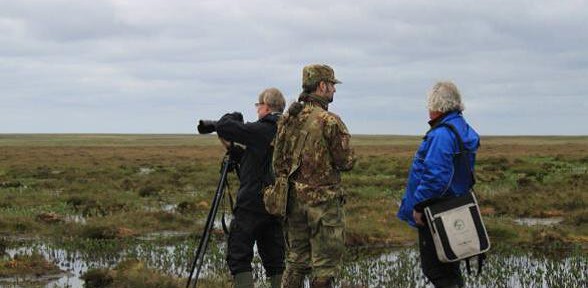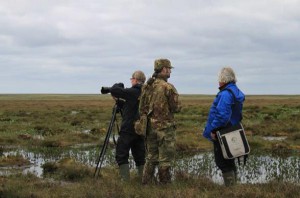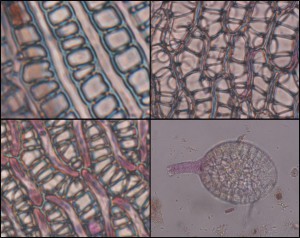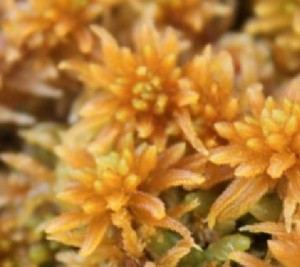
Sphagnosis is diagnosed when somebody has become completely in awe and astounded by the astonishing beauty of Sphagnum. A name derived from a delegate on an FSC Sphagnum Identification course in April this year. As one develops sphagnosis the condition worsens when you gain awareness of the atypical forms, these individuals do not conform to identification guides and the situation becomes problematic. Last month I had the amazing opportunity to learn more about these atypical forms, when my placement organisation the ERI hosted two visitors on a special mission.

Jukka Laine captures the spectacular dubh lochans in Munsary while Harri Vasander discusses with Neil Macleod, one of the reserve wardens. Photo Roxane Andersen
Prof. Harri Vasander and Prof. Jukka Laine travelled to the extensive blanket bog of the Flow Country in the far north of Scotland from Finland to take pictures and collect samples of Sphagnum. The Finnish researchers received a grant to expand their Finnish Sphagnum identification guide (“The intricate beauty of Sphagnum” ) to Europe. I will look forward to the book which will include macro and microscopic images of Sphagnum along with the landscape and habitats in which they are found. Although it is better to ID sphagnum in situ, quite often specimens have to be verified by their microscopic features, for example, the structure of the stems leaves. The structures are individual to each different species and microscopy allows us to discover the inner complexity and intricate nature. There is more to Sphagnum than meets the eye!

Microscope images of Sphagnum leaves and male organ the antheridium (bottom right). Photos taken using an Olympus inverted microscope at x400 magnification. Photos Angela Creevy
The Sphagnum hunt was a great success ending in the recording of 24 of the 34 species (biological records confidently sent to The Highlands Biological Recording Group). But needless to say, my sphagnosis got worse! The only cure for me after the two day hunt was finding the delightful Sphagnum pulchrum, and hooray it was the typical form – Thanks Roxane, Jukka, Harri, Neil and Dave!

The vivid Sphagnum pulchrum. A very beautiful bog moss and very lucky I was to see it! Photo: Roxane Andersen
